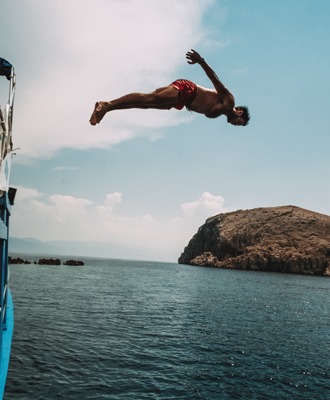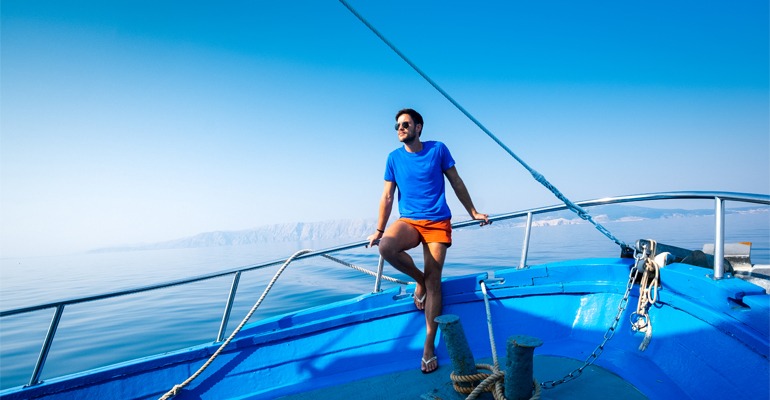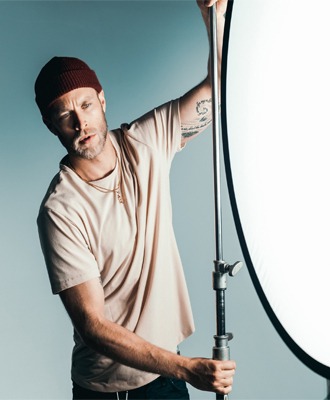Discover all the beauty of Baška - from its sea to its Moon!
ABOUT BAŠKA
Baška is a settlement and a municipality located on the south east of the island of Krk, Croatia. The village of Baška had a full-time population of 981 in the 2011 census, with 1,674 people in the greater municipality.
This cultural and historical centre with its old stone houses and narrow streets, has been a tourist destination since the 19th century, and has developed into a popular resort. It is known for its inscribed stone monument from 1100, for its many surrounding beaches, and its long tradition in tourism.
Baška has a rich cultural and historical heritage. Highlights are the early Christian archaeological site from the 5th century, the renowned Baška tablet from the year 1100 found in the Church of St. Lucy the nearby Jurandvor, the remains of a Roman settlement, as well as many historical churches and chapels.
The local museum in Baška houses an ethnographic collection.

ATTRACTIONS
-
CHURCH OF ST. LUCY
Early Romanic little church of St. Lucy in Jurandvor (2 km from Baška), a sacred location of Croatian national history and culture. In the church there is Baška Tablet, the most significant monument of Croatian language and literature, written in Glagolitic letters (around year 1,100). There is an exhibition area by the church.
-
THE BAŠKA TABLET
The Glagolitic alphabet was created by the stylisation of Greek cursive around the middle of the 9th century. Saint Cyril is mainly mentioned as the author of the Glagolitic alphabet who used this alphabet for his translation of ecclesiastical books into the ancient Slavic language.
The Glagolitic alphabet appears in two variants: rounded and squared. Supposedly these characteristics were developed later. The oldest Croatian monument written in Glagolitic alphabet, the Baška tablet, is partly written in the round variant, but the specific Croatian variant of the Glagolitic alphabet is the squared variant.
It was first mentioned in Croatia in the 12th century, and it is most common in coastal parts of Croatia (Istria, the Croatian Littoral, Dalmatia, Zadar and Kvarner island, initially on the islands of Krk, Cres and Lošinj). In 1851, a young priest from Baška, Petar Dorčić found a large stone tablet inscribed with Glagolitic symbols in the soil of the early Romanic church of St. Lucy in Jurandvor, near Baška.
The text written on the tablet was of great interest for scientists of the period. It became an important source of information regarding the development of the Croatian Glagolitic alphabet as well as the Croatian language and culture. It proved the existence of the Croatian state from its earliest days; mentioning the name of the Croatian king, Zvonimir and marks the northern borders of his kingdom on the island of Krk.
The text on the tablet was partly read in 1865 and completely in 1875. It was believed that the tablet included secret data, but it was later established that the tablet was the certification of the donation of land which king Zvonimir donated to the Benedictine monastery of Saint Lucy. The tablet lists the witnesses of that deed of donation and describes the time in which the donation took place. It can be established from that part of the text that the tablet dates back to 1100. In 1934, the tablet was, transferred to the Academy of Science and Art in Zagreb where it still stands today. A copy of it is also exhibited in the church of St. Lucy.
-
BISERUJKA CAVE
Visit the Biserujka cave. The existence of this cave has been known, at Rudin or above the Slivanjska bay, for over a hundred years when its interior (with its former entrance being in the shape of a grotto!) was hidden and it has aroused interest for its unrevealed secrets and the beauty of its calcite decorations.
From the time that the story about a smuggler's hidden treasure was created, to the first entrances of interested visitors, its paths have been readjusted and people can now move more freely. With cave illumination being considerably increased, so too the interest for the existing treasure of the subterranean gallery of numerous stalactites, stalagmites, and calcite pillars.
With its length of around 110 m and the dimension of its subterranean space, the interior part truly enchants with its beauty and curiosity of sediment shapes. The cave temperature throughout the year is between 10 and 13 C, and the occasional filtration, leaking from the roofs and floor wetting only happens during the rainy period.
Along the readjusted and safe pathways, the passage through the cave is now available to everyone – from children to adults.
-
AQUARIUM
For sea and underwater lovers, we offer guests the possibility of visiting the Baška aquarium that offers guests the unique experience of the sea world and Croatian Adriatic seabed.
The richness and variety of Adriatic fish (catfish, European conger, lobster, dusky serranus, octopus…) can be seen in around twenty aquariums with twenty cubic metres of sea water.
The aquarium includes one of the largest collections of Adriatic molluscs and cochlea in Croatia. The aquarium is located in the centre of Baška where more than 100 fish species and 400 molluscs and cochlea species can be seen in an area of around 200 square metres.
Tickets- children up to 5 years old = free of charge
- children: 5 - 12 years old = 20.00 HRK
- adults = 30.00 HRK
-
WAKE BOARDING
Ski lift Dunat – located in front of the village of Kornić, between the city of Krk and Punat on the island of Krk. Over 400 m2 of the facility above the sea is located at the start of the ski lift, with a restaurant, board shop and sunbathing terrace, so the majority of visitors spend entire days here enjoying the relaxing summer atmosphere. It does not matter whether you are a beginner or if you already have experience, come, and visit the Krk ski lift. You can rent all the necessary equipment here, chose the “time” or “circles” ticket, and the help of an experienced instructor is included in the price.
-
ZIPLINE EDISON KRK
Zipline Edison is a distinctive attraction on the island of Krk and the whole of Croatia, intended for families and adventure lovers. It is located on the Treskavac bend, along with the state road D102, near the famous Glagolitic Trail, on the viewpoint next to the letter A. The "canopy tour" offers our visitors an unforgettable experience, driving our field vehicles, walking among memorable landscapes and zip lining, all ranging more than 2 km.
-
IMMORTELLE FARM
An interesting fact: from the top of the farm a view reaches the channel between the mainland and the island of Krk where a historical battle between Caesar and Pompey unfolded. Defeated Caesar’s soldiers isolated on Bejavec peninsula built a raft out of barrels in order to reach the mainland. Liburnians are believed to have given them barrels as they had found them friendly. Lucan’s epic poem Pharsalia in 49 BC mentions this historic event for the first time in the world and talks about barrels as packaging material.
-
GASTRONOMY
In the island of Krk's turbulent past, all foreigners coming to the island noticed its advantages and its wealth which they tried to use to the best of their advantage.
Regarding the island's wealth and its single parts, it is best told by the epithets the island is known by. The Romans called the city of Krk “the most brilliant city of Krk inhabitants” and Venetian commissioners called it the "happy and golden island”. Legend has it that lamb from the island of Krk was served during Nero's famous banquets in Rome.
Together with home-made olive oil and wine vinegar, herbs and spices found on the island dominate in the preparation of island delicacies such as laurel, rosemary, garlic, shallots, salt, parsley, tomatoes, olives, carrots... The life expectancy on the island of Krk is usually above the national average. The legend regarding the area's being gifted with a natural wealth, a mild climate and a mild Mediterranean Diet has become reality for the island's numerous centenarians. The secret of long life also lies in the “elixir of youth, health and beauty” which is present in large quantities on the island of Krk and this is confirmed by the islanders when they talk about the olive oil as an obligatory ingredient to both local and national food specialities.
Events
-
WINE DAYS ON THE ISLAND OF
KRK-VRBNIK
Imagined as an event held every year and a way for wine producers from other Croatian regions, together with seven wine producers from Vrbnik and one from the island of Krk, present their wines every year. Compared to other tourist villages on the island of Krk, Vrbnik is visited by excursionists, either individually or in organized groups. Apart from sightseeing the rich cultural heritage, excursionists always visit one of the numerous restaurants and taverns, where together with the exciting gastronomic offer they can enjoy a good Vrbnička Žlahtina wine. Apart from the wine, you will also be able to find home-made brandies, liquors, sherries, olive oil, cheese, and teas…on the stands.
-
FIGS DAYS
"Za kraj augušta smokvu va usta" " (A fig in the mouth for the end of August) - this gastronomical show is held at the end of August or at the beginning of September. Whilst enriching the tourist offer, the aim of this show is to point out the need for renewing the island's fig trees and to encourage the islanders to renew their production and refinement. Visitors to the island of Krk can taste fresh and dried figs, fig sweets and many other fig coffee bars.
-
OLIVE DAYS
Held in Punat at the end of October and at the beginning of November. During these days, the olive harvest and a visit to the oil mill is organized, and in selected restaurants it is possible to taste dishes prepared using the high-quality extra virgin, olive oil from Punat.


